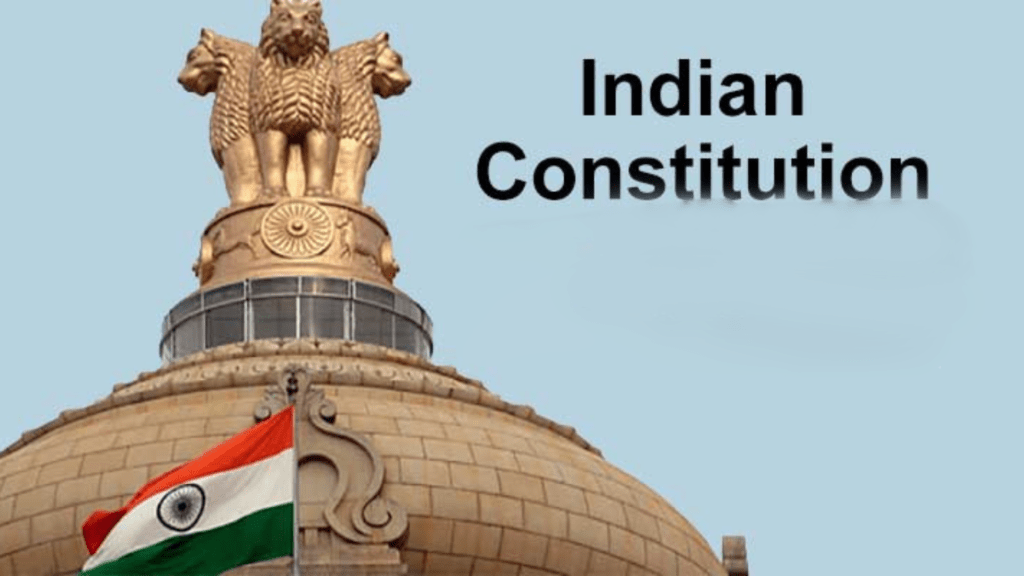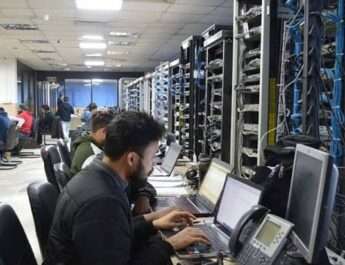
Introduction
The Indian Constitution, a remarkable document that governs the world’s largest democracy, is the product of the collective wisdom of its founding fathers. They envisioned an inclusive, secular, and progressive nation, building the framework for the world’s most populous democracy. This article offers a comprehensive exploration of the salient features of the Indian Constitution, covering its Preamble, Fundamental Rights, Fundamental Duties, Directive Principles, Parliamentary System, Amendment Procedures, Judicial Review, and the Basic Structure Doctrine.
I. The Preamble: Envisioning the Soul of the Constitution
The Preamble serves as the Constitution’s philosophical foundation, succinctly outlining India’s democratic ideals and objectives. It embodies the aspirations of the Indian people, declaring India a “Sovereign, Socialist, Secular, Democratic Republic”. The Preamble highlights the values of justice, liberty, equality, and fraternity, guiding the nation’s governance and promoting unity in diversity.
The Preamble’s significance lies in its ability to reflect the vision of the founding fathers, serving as a constant reminder of the nation’s goals. Furthermore, it provides a moral compass for interpreting the Constitution, helping to ensure that its provisions align with India’s fundamental principles.
II. Fundamental Rights: Upholding Individual Liberties
The Indian Constitution guarantees six fundamental rights to its citizens, which serve as the cornerstone of individual liberty and social justice:
Right to Equality (Articles 14-18) prohibits discrimination based on religion, race, caste, sex, or place of birth. It ensures equal protection of the law and equality before the law, as well as the abolition of untouchability and the prohibition of titles.
Right to Freedom (Articles 19-22) safeguards various personal liberties, including freedom of speech and expression, assembly, association, movement, residence, and profession. Additionally, it protects individuals from arbitrary arrest and detention and ensures the right to life and personal liberty.
Right against Exploitation (Articles 23-24) bans human trafficking, forced labor, and child labor, ensuring the protection of vulnerable individuals from exploitation.
Right to Freedom of Religion (Articles 25-28) guarantees freedom of conscience and the right to profess, practice, and propagate religion. It also provides for the management of religious affairs, the protection of religious and linguistic minorities, and the prohibition of religious instruction in state-funded educational institutions.
Cultural and Educational Rights (Articles 29-30) protect the rights of religious and linguistic minorities to preserve their culture, language, and script. They also ensure the right to establish and administer educational institutions.
Right to Constitutional Remedies (Article 32) empowers citizens to seek redress in the Supreme Court and High Courts if their fundamental rights are violated.
These fundamental rights form the bedrock of India’s democracy, ensuring individual freedom and promoting social harmony.
III. Fundamental Duties: Defining Citizens’ Responsibilities
The 42nd Constitutional Amendment Act (1976) introduced eleven Fundamental Duties, which serve as a reminder of citizens’ responsibilities towards the nation. While these duties are not legally enforceable, they act as moral obligations that foster patriotism, respect for the Constitution, and the protection of India’s sovereignty.
Some of the key duties include respecting the national flag and anthem, promoting harmony and the spirit of brotherhood, safeguarding public property, protecting the environment, and striving towards excellence in all spheres.
IV. Directive Principles of State Policy: A Roadmap for Social Transformation
The Directive Principles of State Policy (DPSPs) serve as guidelines for legislators and policymakers, aiming to establish social, economic, and political justice in India. Although not legally enforceable, they are vital to shaping the government’s policies and ensuring the welfare of citizens.
Some key Directive Principles include:
Social Justice: Promoting equal pay for equal work, ensuring the right to work, education, and public assistance in cases of unemployment, old age, sickness, and disability.
Economic Justice: Striving for an equitable distribution of wealth and resources, minimizing income disparities, and ensuring the right to an adequate livelihood.
Political Justice: Encouraging the participation of all citizens in the political process and working towards universal adult suffrage.
Welfare State: Directing the government to ensure a decent standard of living for all citizens, including proper nutrition, clothing, and shelter.
Environmental Protection: Mandating the government to protect and improve the environment and safeguard wildlife and forests.
Achievements in implementing the DPSPs include the establishment of a welfare state, the adoption of a progressive taxation system, the protection of the environment, and the promotion of international peace and security.
V. The Parliamentary System: Democracy in Action
India’s parliamentary system comprises a bicameral legislature, with the Lok Sabha (House of the People) and the Rajya Sabha (Council of States) representing the two houses of Parliament. The President of India, as the ceremonial head of state, plays a crucial role in this system, while the Prime Minister and the Council of Ministers are responsible for the day-to-day governance of the country.
The parliamentary system ensures a balance of power and promotes accountability. It fosters cooperation between the executive and legislative branches, enabling effective policy-making and implementation. Through a system of checks and balances, the Constitution ensures that no single branch dominates the others, thereby protecting India’s democratic values.
VI. Amendment Procedures: Ensuring Adaptability and Resilience
The Indian Constitution is a living document, designed to adapt to the changing needs of a diverse and evolving nation. Article 368 outlines the process for constitutional amendments, enabling the government to modify the Constitution without compromising its basic structure.
The amendment procedure balances the need for flexibility with the importance of stability, allowing the Constitution to remain relevant and resilient in the face of changing circumstances. Some landmark amendments include the 42nd Amendment (1976), which introduced the Fundamental Duties and strengthened the Directive Principles, and the 73rd and 74th Amendments (1992), which decentralized power and strengthened local governance.
VII. Judicial Review: Safeguarding the Supremacy of the Constitution
Judicial review is a crucial aspect of the Indian Constitution, empowering the judiciary to review the constitutionality of legislative and executive actions. It ensures the supremacy of the Constitution and protects the fundamental rights of citizens.
The power of judicial review has been exercised in numerous landmark cases, including Kesavananda Bharati v. State of Kerala (1973), where the Supreme Court introduced the Basic Structure Doctrine, and Maneka Gandhi v. Union of India (1978), which expanded the scope of the right to life and personal liberty.
VIII. The Basic Structure Doctrine: Preserving Constitutional Integrity
The Basic Structure Doctrine emerged from the landmark case of Kesavananda Bharati v. State of Kerala (1973), asserting that the Constitution’s essential features cannot be altered through amendments. These features include the supremacy of the Constitution, the separation of powers, federalism, the rule of law, and the protection of fundamental rights.
The doctrine serves as a guardian of the Constitution, ensuring that its core principles remain intact and preserving India’s democratic fabric.
Conclusion
The Indian Constitution is a living document that captures the aspirations and values of a diverse and pluralistic nation. Its salient features provide a robust framework for governance, ensuring the protection of individual liberties, promoting social and economic justice, and maintaining the country’s democratic fabric. As India continues to evolve, the Constitution serves as a guiding force, shaping the nation’s progress and fostering unity in diversity.
By understanding the intricacies of the Indian Constitution, one can appreciate the vision and perseverance of its architects, who laid the foundation for a vibrant and inclusive democracy. The Preamble sets the stage for the Constitution’s objectives, while the Fundamental Rights, Fundamental Duties, and Directive Principles ensure the protection and welfare of citizens. The Parliamentary System promotes democratic values, and the Amendment Procedures allow the Constitution to adapt to changing circumstances. The principles of Judicial Review and the Basic Structure Doctrine protect the Constitution’s integrity and safeguard its core principles.
In conclusion, the Indian Constitution is a testament to the wisdom and foresight of its founding fathers. As India continues its journey as the world’s largest democracy, the Constitution will remain a beacon of hope and a symbol of the nation’s commitment to justice, liberty, equality, and fraternity.



